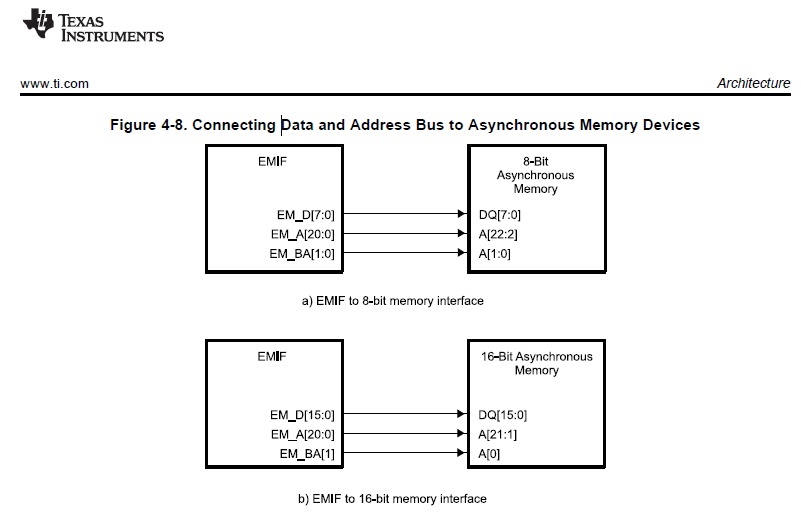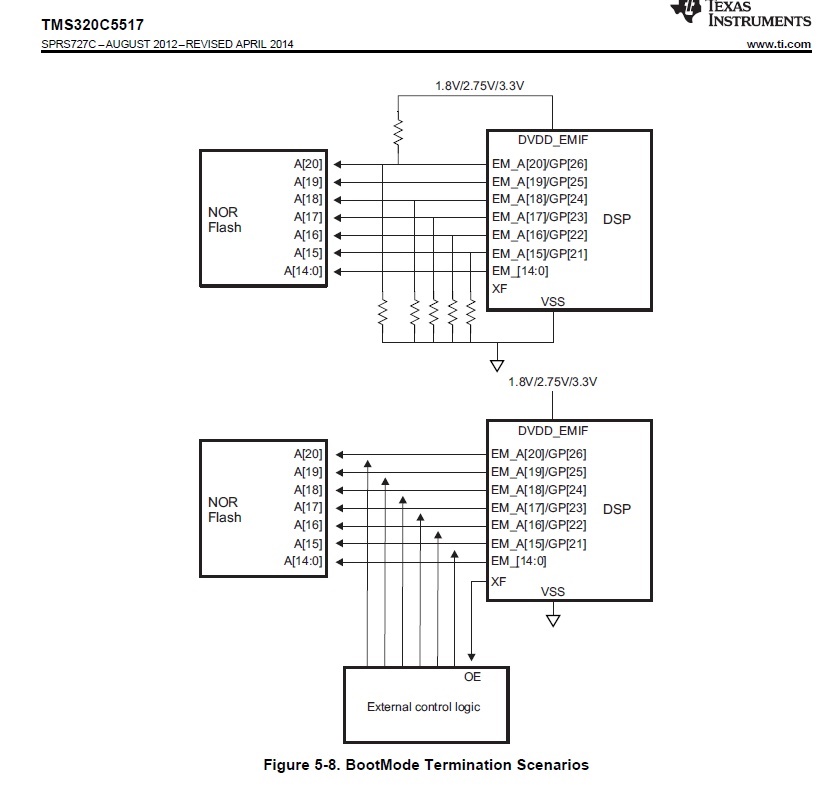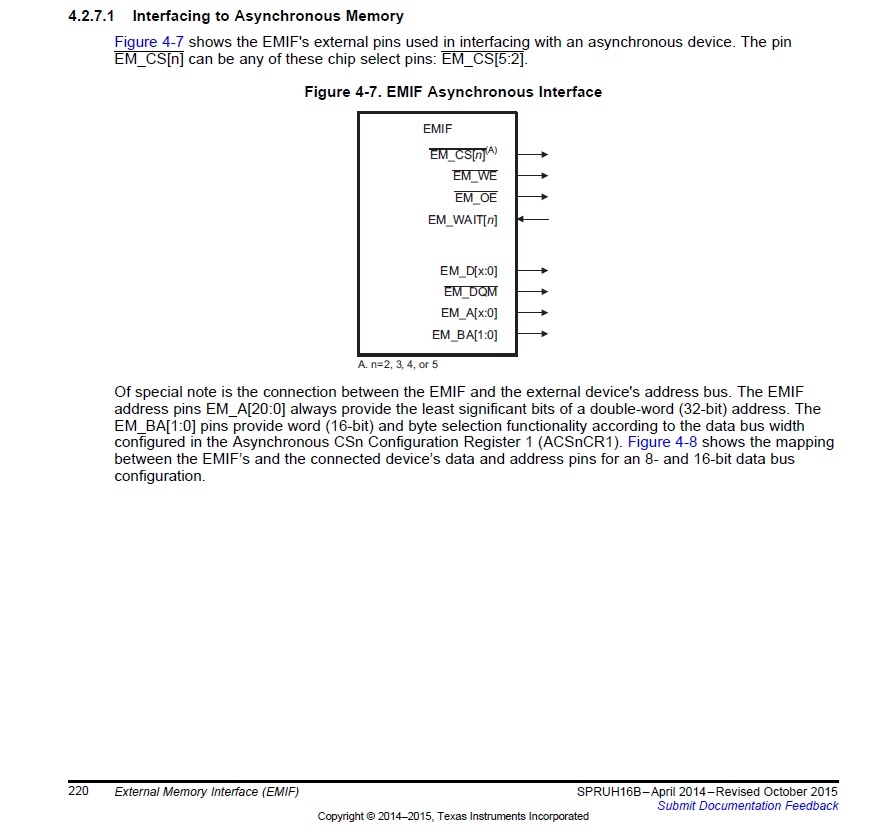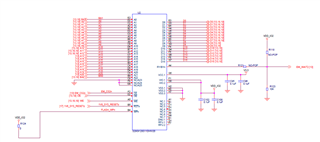Hi everyone.
In my application we intend to use a 16-bit NOR Flash, to boot and then make it usable for the program DSP, via EMIF.
As regards the connection of addresses, the "spruh16b" datasheet on page 221 recommends the connection of Fig.4-8, type "B)",
therefore with A[0] of the Flash on EM_BA[1] of the DSP.

In the "SPRS727C" datasheet Page 76, for booting from NOR flash, the addresses A[14:0] are connected to EM_[14:0] of the DSP, therefore without using EM_BA[1].

How should I connect the addresses of my NOR Flash to the DSP, so that it boots correctly and can then use it as working memory?
Regards,
Daniele




